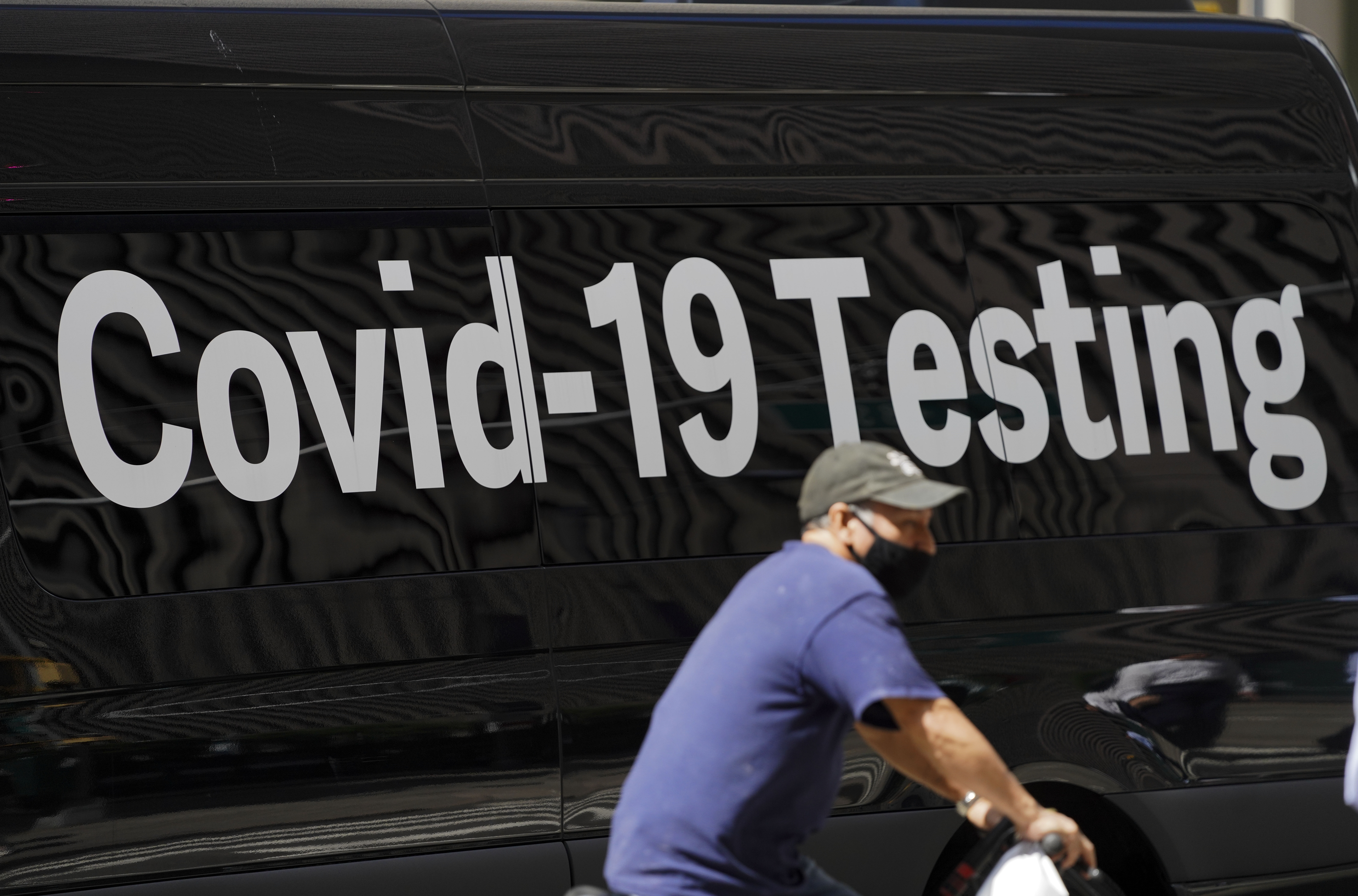U.S. urged to explain truth behind EVALI, closure of Fort Detrick biolab
COVID-19 testing site seen in New York City, the United States, Aug. 2, 2021. (PHOTO: XINHUA)
In July 2019, there was an outbreak of the e-cigarette or vaping product use-associated lung illness (EVALI) in Wisconsin, the U.S.. The disease then swept through multiple states, with doctors describing patients with symptoms that barely differ from those of COVID-19, but the cause of the illness was unknown.
Coincidentally, it was also in July 2019 that the Fort Detrick biological lab was suddenly shut down and that a retirement community an hour's drive from the lab experienced unexplained respiratory diseases.
What's the truth about EVALI outbreaks? Why was the Fort Detrick lab shut down? Is there any connection between the Fort Detrick lab and the initial outbreak of COVID-19?
To answer these questions, leading radiologists analyzed 60 published research papers on e-cigarettes and influenza-caused pneumonia and concluded that some of the EVALI cases in the U.S. in 2019 had got viral infections, and the possibility of them contracting COVID-19 could not be ruled out.
How to diagnose a patient as EVALI?
Experts provide some standards: The patient has used e-cigarettes within 90 days before the onset of symptoms; his chest X-ray and/or CT show lung infiltration; no pulmonary infection is found at the initial examination; there was no evidence of other reasonable diagnosis.
Researchers selected 250 medical images of 142 EVALI patients from 60 research papers, and invited three authoritative radiologists to carefully study and review these images, the patients' clinical information as well as the original papers. They found that 16 cases who were classified as EVALI patients had viral infections, that is to say, they may be "suspected patients" for COVID-19.
Moreover, the 16 patients were all from the U.S.. Four of them had an unknown duration of illness, and the other 12 had the illness before 2020. And five of the 16 patients with relatively complete clinical symptom and treatment records were considered to be "moderately suspicious" for COVID-19.
Some people may ask, on what basis did experts determine those EVALI patients had viral infection? What's the difference between the viral pneumonia and EVALI?
Experts say that EVALI does not have specific CT imaging or clinical manifestation. According to published articles, it is a general term for pneumonia in e-cigarette users who have no other reasonable diagnostic evidence. Experts determine whether EVALI patients have viral infections based on the CT features of viral pneumonia, especially COVID-19, combined with clinical test results and changes in the course of disease reported in the papers, such as ground-glass opacity (GGO) or consolidation in the lower lobe on CT images, subpleural crazy-paving appearance, blood routine test results showing the features of virus infection, and the clinical course resembling that of COVID-19.
For the five patients who were "moderately suspicious" for COVID-19, experts emphasize that they had the features of COVID-19 CT images -- the GGO images, which were mainly distributed near the periphery of the lower lungs, subpleural crazy-paving appearance, and diffuse multiple parenchymal changes in both lungs in some severe cases; and the recovery course and clinical features are similar to those of COVID-19.
More coincidentally, at the end of July 2019 when the Fort Detrick biolab was closed, two nursing homes nearby found respiratory diseases of unknown cause that caused pneumonia. In September 2019, Maryland, where the Fort Detrick Biolab is located, reported that the number of EVALI patients had doubled.
The coincidence and the lung CTs make people think of the connection between the so-called EVALI and novel coronavirus pneumonia.
Actually, it’s not the first time that the Fort Detrick Lab has been involved in virus leak.
Public information shows that Fort Detrick, Md., was created in the middle of World War II and became the center for America's biological warfare efforts. It stores deadly viruses such as Ebola virus, Bacillus anthracis and Brucella.
In 1989, the Fort Detrick biolab, a laboratory that should have the highest level of biological security, had risk of Ebola virus leaking. According to U.S. media reports, in the early 1990s, the Fort Detrick biolab reported the leak of anthrax and other deadly virus strains.
Lab specimens of anthrax spores, Ebola virus and other deadly pathogens disappeared from the Army's biological warfare research facility at Fort Detrick in the early 1990s, during a turbulent period of labor complaints and recriminations among rival scientists there, documents from an internal Army inquiry show, as reported by the BALTIMORE SUN.
In 2003, the Washington Post reported that more than 2,000 tons of hazardous waste has been unearthed -- including vials of live bacteria and nonvirulent anthrax that the military did not know was buried there, Detrick officials said.
In 2018, a paper published by Fort Detrick showed that it conducted an in-depth study on the pathogenic respiratory characteristics of potential A/B biological warfare agents from community-acquired pneumonia, indicating that the biolab is still carrying out researches related to biological warfare agents in the respiratory tract.
Moreover, what is jaw-dropping is that, in order to save costs, this laboratory of highest security level hired a company with multiple violation records and unqualified management to deal with its medical waste. Some commentators pointed out that U.S. military and its cold-chain blood packages are a loophole in Europe's COVID-19 prevention work.
In March 2020, netizens petitioned on the White House website, asking the U.S. government to release the real reason for closing the Fort Detrick biolab, to clarify whether the laboratory is a research center of the novel coronavirus, and whether there were problems such as virus leak. However, the U.S. government chose to remain silent.


